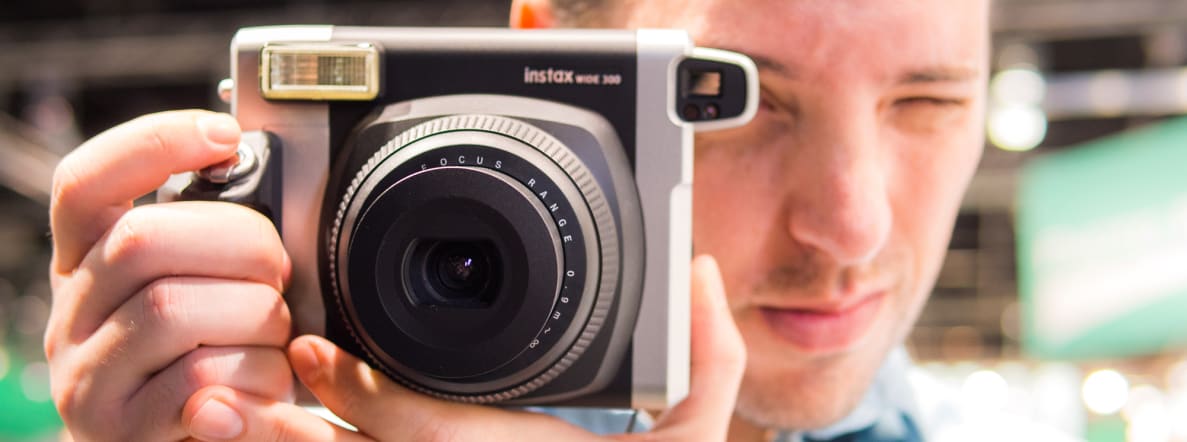Fuji's Instax series cameras are cheap and cheerful, with lightweight plastic construction, minimal shooting controls, and a design focused on providing instant gratification. But many who have come to Instax Mini cameras from old-school Polaroid cameras may have been surprised by how much smaller Instax Mini film is—just 62 x 46mm (about the size of a credit card), compared to Polaroid SX70's 79 x 79mm.
That's why Fuji also makes Instax Wide cameras and film, offering a picture size of 99 x 62mm—larger than Polaroid. Ahead of Photokina 2014 in Cologne, Germany, the company announced the new Instax Wide 300 (MSRP $129.99), and we got to spend a little time with it on the show floor.
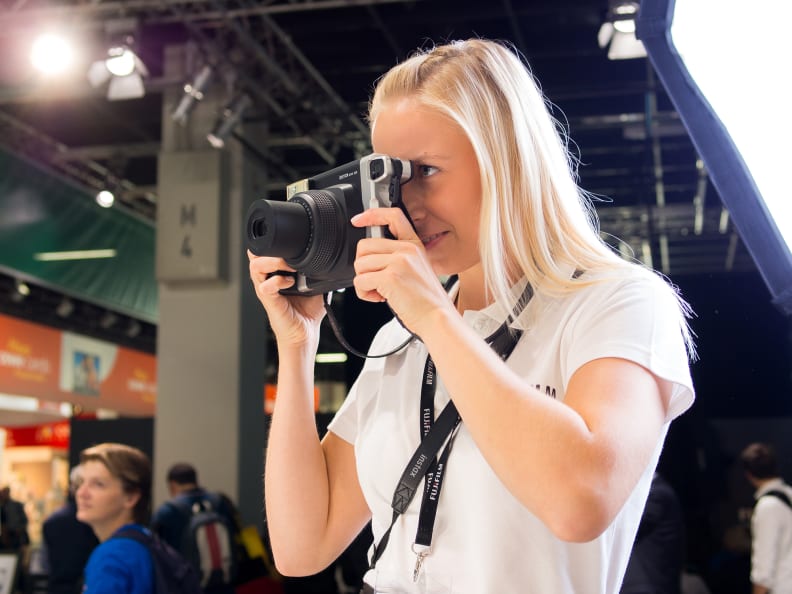
Fujifilm reps used the Instax Wide 300 in a photobooth at the company's Photokina 2014 display.
Design & Usability
Plastic fantastic
Like other Instax cameras—even the $200 Instax Mini 90 and Instax Share SP-1—the Wide 300 is wholly plastic. But that's not a dig; this isn't meant to be professional equipment, and it doesn't need a magnesium alloy build, weather sealing, or super-tight tolerances. For instant photography, rough edges are part of the fun.
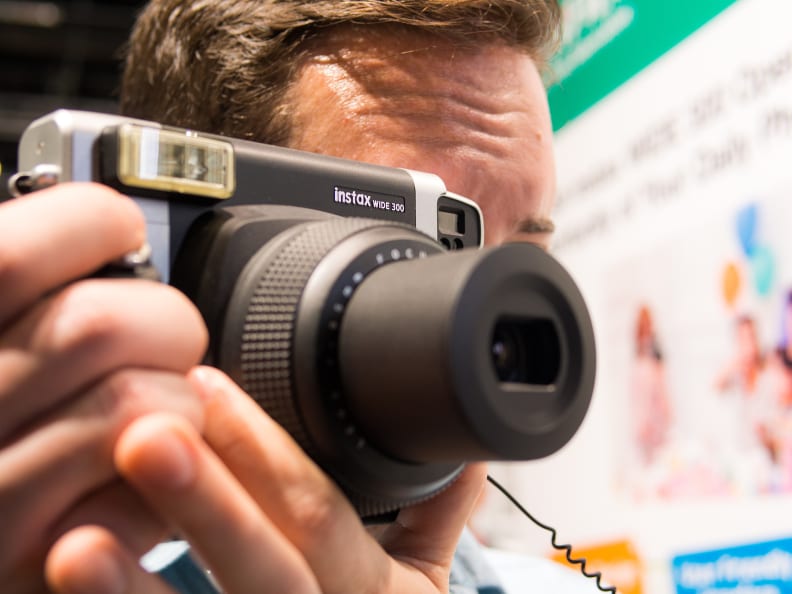
The Instax Wide 300 handles well thanks to its large grip, but the big body and small corner viewfinder are a slightly challenging pair.
Still, the Instax Wide 300 is heavier-duty than most other Instax cameras out there. For one thing, it's big. Much wider than any Polaroid camera I ever used, for sure, and far bigger than all of the Instax Mini bodies. That makes sense: bigger film, bigger camera. But the Wide 300 seems to have taken that license and run with it.
That's not to say a bigger camera doesn't have its advantages. The Instax Wide 300 has a chunky grip, DSLR-style shutter button/power switch combo, and knurled rubber focus zone ring. There's also a flash and a (tiny, clunky) optical finder above and to the left of the lens to help you frame your shots.
As with most instant film cameras, you load the film in a cartridge at the rear of the camera, and it spits out the top when you snap a shot. The film takes a minute or two to develop to the point of intelligibility, and another few for the picture to fully form. Images out of the Wide 300 are as crisp as anything I've seen on instant film, and pleasantly contrasty as well.

Here's a selection of sample shots from the Instax Wide 300, including one where I clearly used the wrong focus zone.
Around back, there's also a small monochrome LCD (to display the number of frames remaining in the cartridge), a flash button, and a brightness control toggle. There's even a hard plastic thumb rest to go with the front grip.
On the bottom, there's a plastic universal tripod socket, which Fujifilm suggests would be great for group shots. True, but you'll need someone to sit out, since there's no remote control available.
{{ photo_gallery name="Design" }}
Features
Just a little more flexibility
The Instax Wide 300's 95mm lens offers a couple small improvements over the previous model's glass. For one thing, it can focus down to 40cm (15.7 inches) with the included close-up lens adapter, which is just about the range you need for a shot-filling selfie. (Don't knock it. It's a hallowed use of instant cameras since time immemorial.) For another, it lets you choose between two "focus zones": 90cm to 3m, and 3m to infinity.
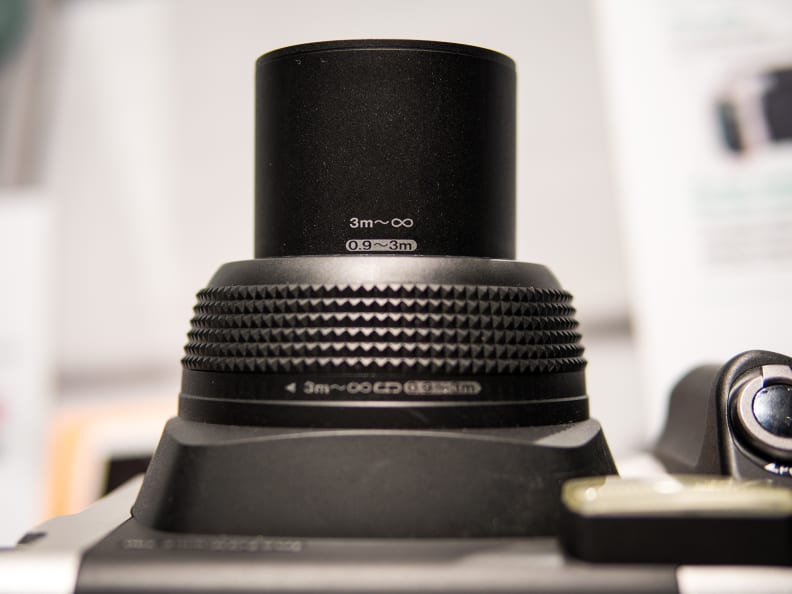
The lens barrel has markings to show which focus zone you're in.
The focus zone ring doesn't exactly deliver Zeiss-level feel, but that's hardly the point. It gets 'er done, which is what this camera is all about.
Another cool feature is brightness control, a rudimentary sort of exposure compensation that lets you choose between dark, normal, and light aesthetics. If you like a high-key look for your fashion selfies, flick it over to light. Want something more moody? Go dark. For everything else, it's probably best to stick to normal.
The flash—which is absolutely vital at parties and other places you might typically use a camera like this—can't be turned off for bright-light shooting. The more expensive Instax Mini 90 Neo Classic can go flashless, but the feature hasn't carried over. You can hold the flash button on the back for extra fill flash, but that's it.
Instax Wide film comes in 10-shot cartridges, which means you'll probably be refilling with some regularity. They go for a little over $8 per cartridge on Amazon these days, which adds up quickly. Still, there's something about the look you get from instant film that can't be replicated on digital—no matter how many filters you use.
Conclusion
Fujifilm widens the appeal of its Instax system.
Fujifilm brought only two types of cameras to Photokina 2014: its X-series premium mirrorless and compact models, and Instax products. That says something about the prestige the company places on its instant film cameras, and their enduring appeal in a rapidly changing photography market.
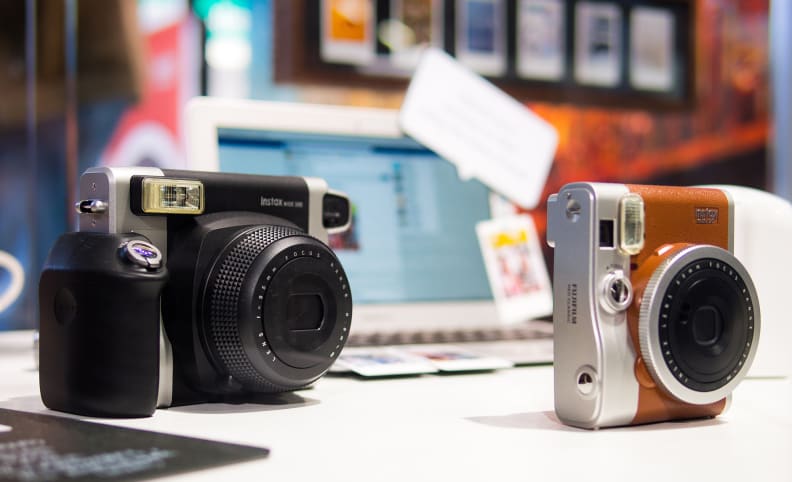
The Instax Wide 300 on display in Fujifilm's Photokina 2014 booth
The Instax Wide 300 is a subtle evolution of the earlier Instax Wide 210, refining the controls, adding a couple extra flexibility features, and providing a more DSLR-like control scheme that does feel pretty great. While we'd love to see some of the more advanced manual controls from the Instax Mini 90 Neo Classic trickle down, the feature set here will please almost everyone.
It's lightweight, cheap, fun to use, and produces delightfully retro images that you simply can't get from anything else—except maybe a secondhand Polaroid with Impossible Project film. In short, if instant film floats your boat, this is a camera that should be on your shortlist.
Meet the tester
Ben is an experienced industry journalist who formerly served as Senior Editor of News and Features at Reviewed. He now contributes as a freelance writer and editor. Most recently hailing from the vast wilds of the American southwest, he is an avid photographer who is deeply disturbed by the lack of wide open landscapes in Boston.
Checking our work.
Our team is here to help you buy the best stuff and love what you own. Our writers, editors, and experts obsess over the products we cover to make sure you're confident and satisfied. Have a different opinion about something we recommend? Email us and we'll compare notes.
Shoot us an email